Market
5 DePin Altcoins to Add to Your Portfolio in June 2024

Decentralized Physical Infrastructure Networks (DePIN) have emerged as a groundbreaking sector. With several projects taking clear strides to be the best within the category.
These projects aim to decentralize and democratize the internet’s infrastructure layer, creating immense potential for growth and innovation. Here are five DePIN projects that show promising technical setups and could be valuable additions to your portfolio.
Render (RNDR)
Render coin (RNDR) is the lifeblood of the Render Network, a special DePIN platform that utilizes blockchain tech to connect artists with unused processing power from other people’s computers.
Imagine you’re an artist working on a project that requires intense 3D rendering, like creating special effects for a movie. Traditionally, this would necessitate a powerful computer, which can be expensive. The Render Network lets you tap into the unused graphics processing unit (GPU) power of other computers on the network. Folks lending out their GPU power earn RNDR tokens in return.
Render’s market cap fluctuates around $3.8 billion, ranking it the 31st largest cryptocurrency by market capitalization.
RNDR Technical Outlook:
Render’s price has shown strength over the past two months, rebounding from a major correction to the $6 level and now trading at $10. The key support level is the 1D Ichimoku cloud, as shown in the chart.
If the price breaks below the cloud, it could present a good buying opportunity for RNDR.
Read More: Render Token (RNDR): A Guide to What It Is and How It Works
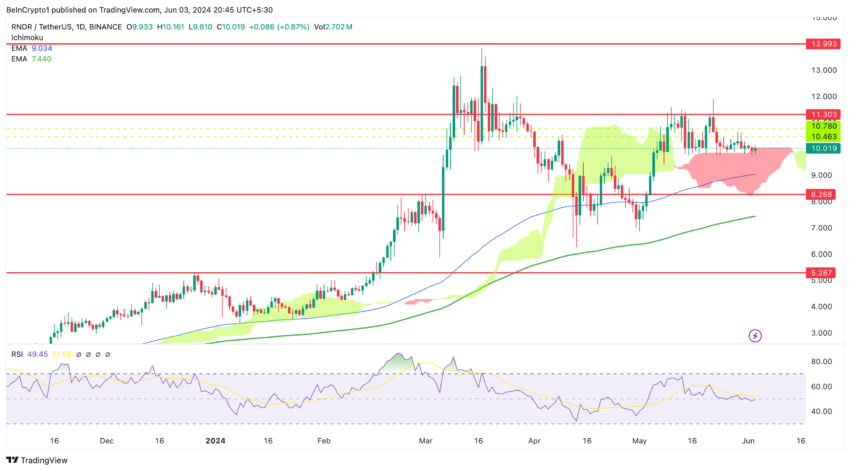
Render (RNDR) is currently trading at $10.01. The key resistance levels are $10.78, $11.30, and $13.99. These levels mark significant points where the price has previously struggled to break through. On the support side, the immediate support level is at $9.03, indicated by the EMA line.
Other crucial support levels are $8.26 and $5.28, the latter offering a major buying opportunity if the price dips this far. The 1D Ichimoku cloud shown in the chart acts as a key support zone, and a break below this cloud could present a good buying opportunity for RNDR.
Phala (PHA)
Phala Network is a DePIN blockchain-based cloud computing service that focuses on privacy. Unlike traditional cloud services, where your data resides on someone else’s servers, Phala offers a way to perform computations on your data without ever revealing the data itself.
This is achieved through a combination of advanced cryptography and specialized hardware.
Phala’s market cap fluctuates around $134.8 million, making it the 398th largest cryptocurrency by market capitalization. This is a highly significant low-cap cryptocurrency to consider investing in, though it also carries higher risk.
PHA Technical Outlook:
Phala’s price has sharply declined from $0.37 to $0.16 and is now trading at $0.1857. Currently, the price is below the daily Ichimoku cloud. If it manages to break above the cloud, it could present significant upside potential for investors.
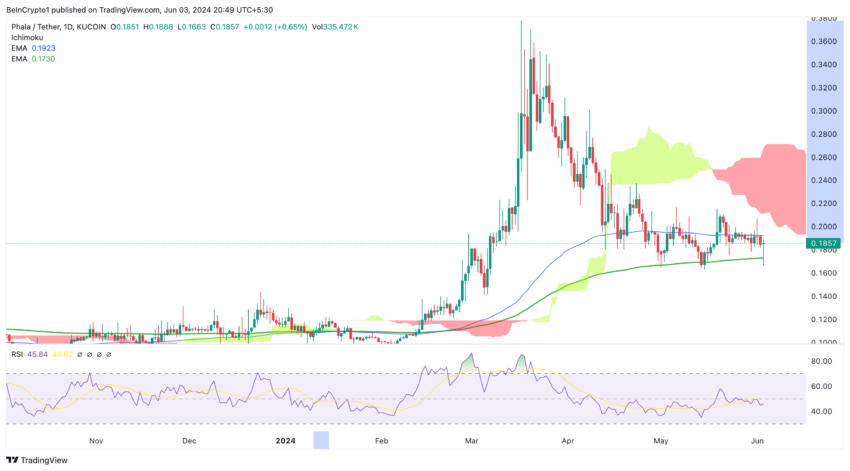
Additionally, if the price breaks below the 200 EMA in green, this could lead to a further price correction, as the price is currently consolidating and finding the 200 EMA as an important support level. Monitoring these levels will be crucial for making informed investment decisions.
Nosana (NOS)
Nosana is a DePIN crowd-computing platform built on the Solana blockchain. It functions by connecting individuals with spare CPU power on their devices to projects that require a computational boost.
In return, people contributing their CPU power earn NOS tokens, the platform’s native cryptocurrency.
Why is Nosana Important?
Nosana offers a unique take on cloud computing with a couple of key advantages:
- Democratized Access to Processing Power: Projects requiring intensive computational resources can access them through a distributed network, making powerful computing more affordable and accessible.
- Monetization of Unused Resources: Individuals with idle CPU capacity on their devices can generate additional income by renting it out to the network.
- Eco-Friendly Alternative: Nosana leverages underutilized personal devices, reducing reliance on large data centers that consume significant energy.
NOS Technical Outlook:
Nosana (NOS) is currently trading inside the 1D Ichimoku cloud. The price has tested the lower boundary of the cloud, which is a bullish sign, highlighting the importance of monitoring this technical indicator.
Read More: Is DePIN the Dark Horse of the Next Crypto Bull Run?
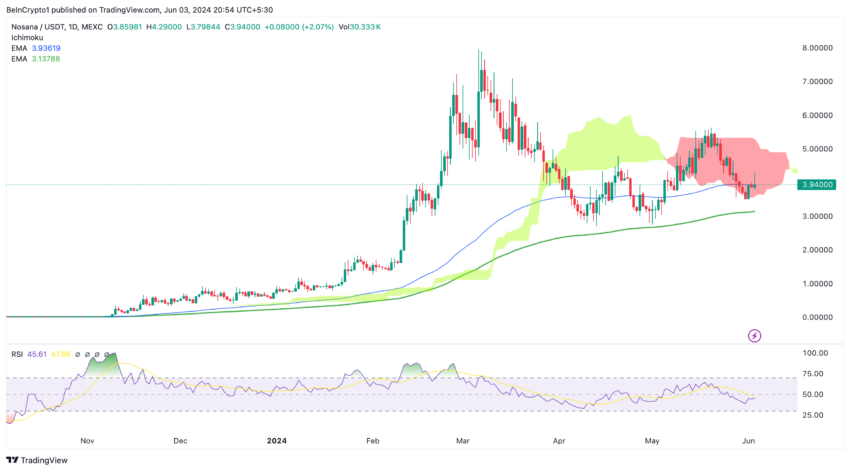
The EMA 100 D, shown in blue, is acting as a major support level. A breakout below the 200 EMA could signal further price depreciation. Despite recent fluctuations, NOS remains an attractive coin within the Solana ecosystem.
JasmyCoin (JASMY)
Jasmy coin (JASMY) is the native cryptocurrency that fuels the DePIN Jasmy ecosystem. This project centers around the Internet of Things (IoT) and aims to empower users with control over their data.
JASMY Technical Outlook
Jasmy has gained 100% from May 26 to the present, leading to an overbought condition. We anticipate a correction to the $0.027 – $0.030 range, with the 4H Ichimoku cloud being a key level to watch. Although the uptrend may continue, investing at current prices presents a risk.
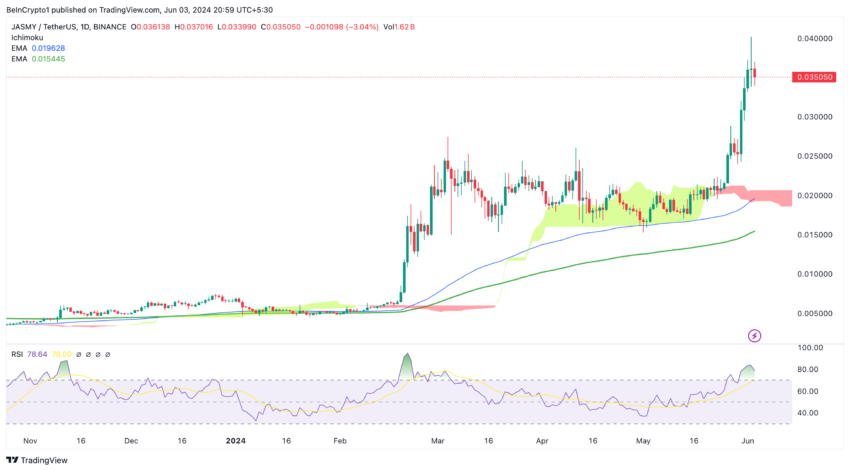
Waiting for the 4H Ichimoku cloud correction could be a wise move for prudent investors.
Jasmy coin has flipped many cryptos in the market cap ranking, making it the 68th largest crypto by market capitalization, currently fluctuating around $1.7 billion.
Golem (GLM)
Golem Network is a decentralized platform that disrupts the traditional way we access and share computing resources. In essence, it acts as a giant online marketplace for computational power.
How Does Golem Network Work?
Golem Network functions through a peer-to-peer (P2P) system connecting two types of users:
- Requestors: Individuals or projects need extra computing power for tasks like scientific simulations, 3D rendering, or artificial intelligence (AI) training.
- Providers: People with unused processing power on their computers (CPUs or GPUs) can contribute that power to the network and earn Golem’s native token, GLM.
GLM Technical Outlook:
GLM is trading in a descending pattern, continuing its price correction from $0.66 to $0.47. The current price is $0.49, which could be a good point to invest in GLM long-term. If the price falls below the $0.47 support level, it could be very bearish and potentially send the price down to $0.45 or $0.40.
Read More: Decentralized Physical Infrastructure Network (DePIN) Projects to Watch in 2024
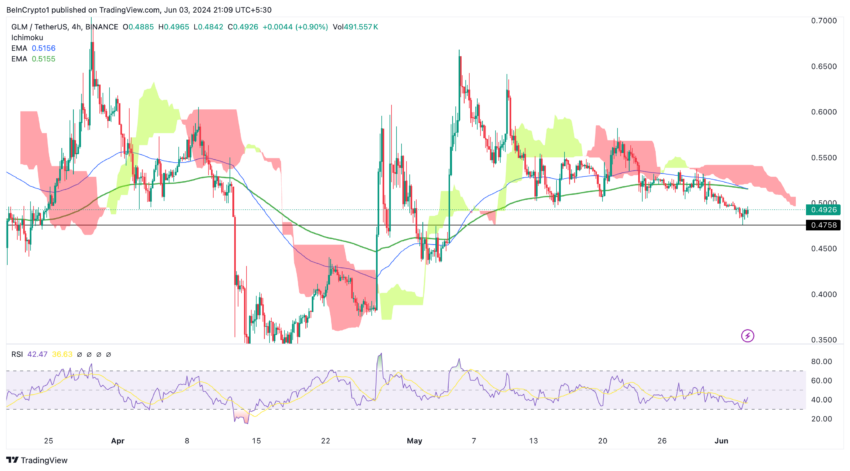
This could present a very good opportunity to invest in GLM. If the price of GLM tests the daily Ichimoku cloud, it could be very bullish and increase volatility. Key resistance levels to watch are $0.60 and $1.
The $1 mark has never been reached, corresponding to a $1 billion market cap in the current circulating supply.
Disclaimer
In line with the Trust Project guidelines, this price analysis article is for informational purposes only and should not be considered financial or investment advice. BeInCrypto is committed to accurate, unbiased reporting, but market conditions are subject to change without notice. Always conduct your own research and consult with a professional before making any financial decisions. Please note that our Terms and Conditions, Privacy Policy, and Disclaimers have been updated.
Market
Report Alleges Massive Meme Coin Sniping on Pump.fun

According to a new report from Pine Analytics, token deployers on Pump.fun systematically funded sniper wallets to buy their own meme coins. This impacted over 15,000 token launches on the platform.
These sniper wallets operated primarily during US trading hours, executing standardized, profitable strategies. Unrelated bot activity obscures their behavior, making it extremely difficult to isolate these wallets—and they can readily adapt to new countermeasures.
Snipers Roam Free on Pump.fun Meme Coins
Pump.fun has remained one of the most popular meme coin launchpads on Solana despite persistent controversies and other criticism.
However, Pine Analytics’ new report has uncovered a new controversy, discovering systematic market manipulation on the platform. These snipes include as much as 1.75% of all launch activity on Pump.fun.
“Our analysis reveals that this tactic is not rare or fringe — over the past month alone, more than 15,000 SOL in realized profit was extracted through this method, across 15,000+ launches involving 4,600+ sniper wallets and 10,400+ deployers. These wallets demonstrate unusually high success rates (87% of snipes were profitable), clean exits, and structured operational patterns,” it claimed.
Solana meme coin deployers on Pump.fun follow a consistent pattern. They fund one or more sniper wallets and grant them advance notice of upcoming token launches.
Those wallets purchase tokens in the very first block and then liquidate almost immediately—85% within five minutes and 90% in just one or two swap events.

Pump.fun meme coin developers exploit this tactic to create the appearance of immediate demand for their tokens. Retail investors, unaware of the prior sell‑off, often purchase these tokens after the snipe, giving developers an unfair advantage. This constitutes market manipulation and erodes trust in the platform.
Pine Analytics had to carefully calibrate its methods to identify genuine snipers. Apparently, 50% of meme coin launches on Pump.fun involve sniping, but most of this is probably bots using the “spray and pray” method.
However, by filtering out snipers with no direct links to developer wallets, the firm missed projects that covered their tracks through proxies and burners.
In other words, the meme coin community does not have adequate defenses against systematic abuse on Pump.fun. There are a few possible ways that the platform could flag repeat offenders and sketchy projects, but adaptive countermeasures could defeat them. This problem demands persistent and proactive action.
Unfortunately, it may be difficult to enact such policies. Meme coin sniping is so systematic that Pump.fun could only fight it with real commitment.
Analysts think that building an on-chain culture that rewards transparency over extraction is the best long-term solution. A shift like that would be truly seismic, and the meme coin sector might not survive it.
Disclaimer
In adherence to the Trust Project guidelines, BeInCrypto is committed to unbiased, transparent reporting. This news article aims to provide accurate, timely information. However, readers are advised to verify facts independently and consult with a professional before making any decisions based on this content. Please note that our Terms and Conditions, Privacy Policy, and Disclaimers have been updated.
Market
Solana Leads Blockchain Metrics as SOL Momentum Builds
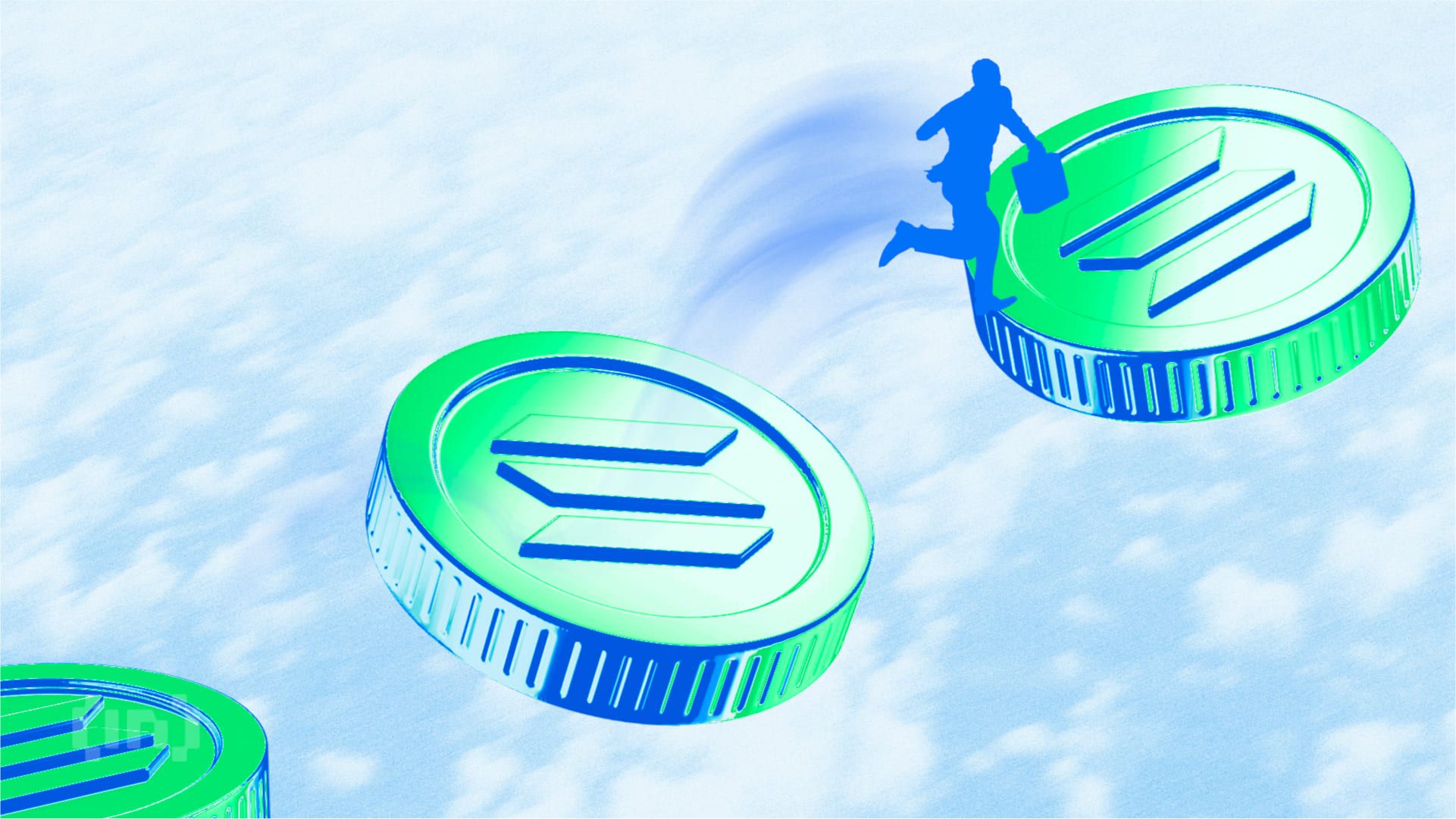
Solana (SOL) continues to show strength across multiple fronts, maintaining a bullish structure on its Ichimoku Cloud chart while gaining momentum in key market metrics. The BBTrend indicator has turned higher again, signaling renewed buying pressure after a brief cooldown.
On-chain activity remains strong, with Solana leading all blockchains in DEX volume and dominating fee generation thanks to the explosive growth of meme coins and launchpad activity. With SOL now trading above a key resistance level, the path is open for further upside—though a loss of momentum could still trigger a retest of lower supports.
Solana Maintains Bullish Structure, but Momentum Faces Key Test
On Solana’s Ichimoku Cloud chart, the price is currently above the Kijun-sen (red base line) but has dipped below the Tenkan-sen (blue conversion line), signaling weakening short-term momentum.
The flattening Tenkan-sen and price behavior suggest possible consolidation or the early stages of a pullback. Still, with the price holding above the Kijun-sen, medium-term support remains intact.
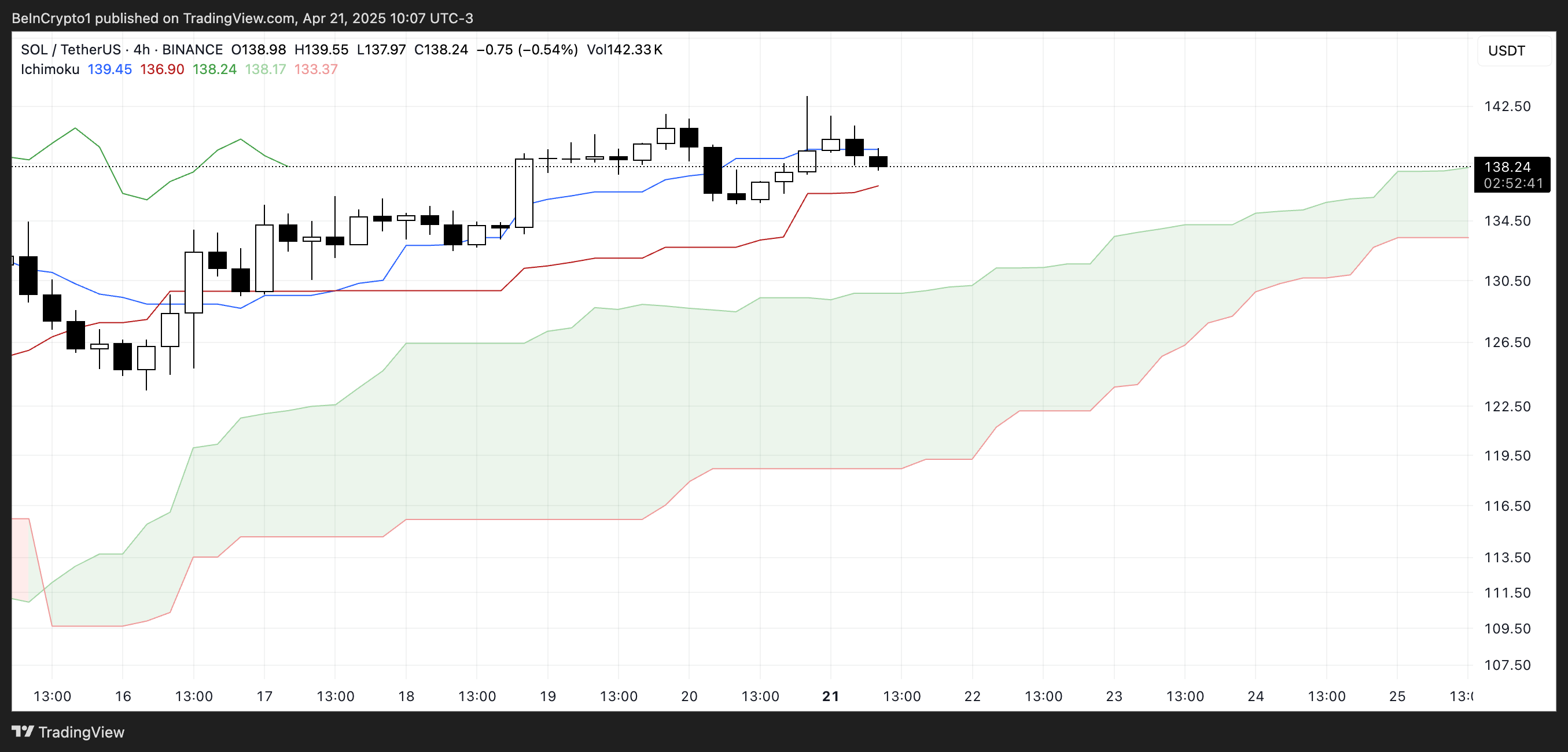
The overall Ichimoku structure remains bullish, with a thick, rising cloud and leading span A well above span B—indicating strong underlying support.
If Solana finds support at the Kijun-sen and climbs back above the Tenkan-sen, the uptrend could regain strength; otherwise, a test of the cloud’s upper boundary may follow.

Meanwhile, Solana’s BBTrend is currently at 6, extending nearly ten days in positive territory after peaking at 17.5 on April 14. The recent increase from 4.26 to 6 suggests renewed bullish momentum following a brief cooldown.
BBTrend, or Bollinger Band Trend, tracks the strength of price movement based on Bollinger Band expansion.
Positive values like the current one point to an active uptrend, and if the BBTrend continues to rise, it could signal stronger momentum and potential for another upward move.
Solana Dominates DEX Volume and Fee Generation as Meme Coins Drive Ecosystem Growth
Solana has once again claimed the top spot among all chains in DEX volume, recording $15.15 billion over the past seven days. The combined total of Ethereum, BNB, Base, and Arbitrum reached $22.7 billion.

In the last 24 hours alone, Solana saw $1.67 billion in volume, largely fueled by its booming meme coin ecosystem and the ongoing launchpad battle between PumpFun and Raydium. Adding to this good momentum, Solana recently surpassed Ethereum in Staking Market Cap.

When it comes to application fees, Solana’s momentum is just as clear. Four of the top ten fee-generating apps over the past week—PumpFun, Jupiter, Jito, and Meteora—are Solana-focused.
Pump leads the pack with nearly $18 million in fees alone.
Solana Breaks Key Resistance as Uptrend Targets Higher Levels, but Risks Remain
Solana has finally broken above its key resistance at $136, flipping it into a new support level that was successfully tested just yesterday.
Its EMA lines remain aligned in a bullish setup, suggesting the uptrend is still intact.
If this momentum continues, SOL price could aim for the next resistance zones at $147 and $152—levels that, if breached, open the door to a potential move toward $179.
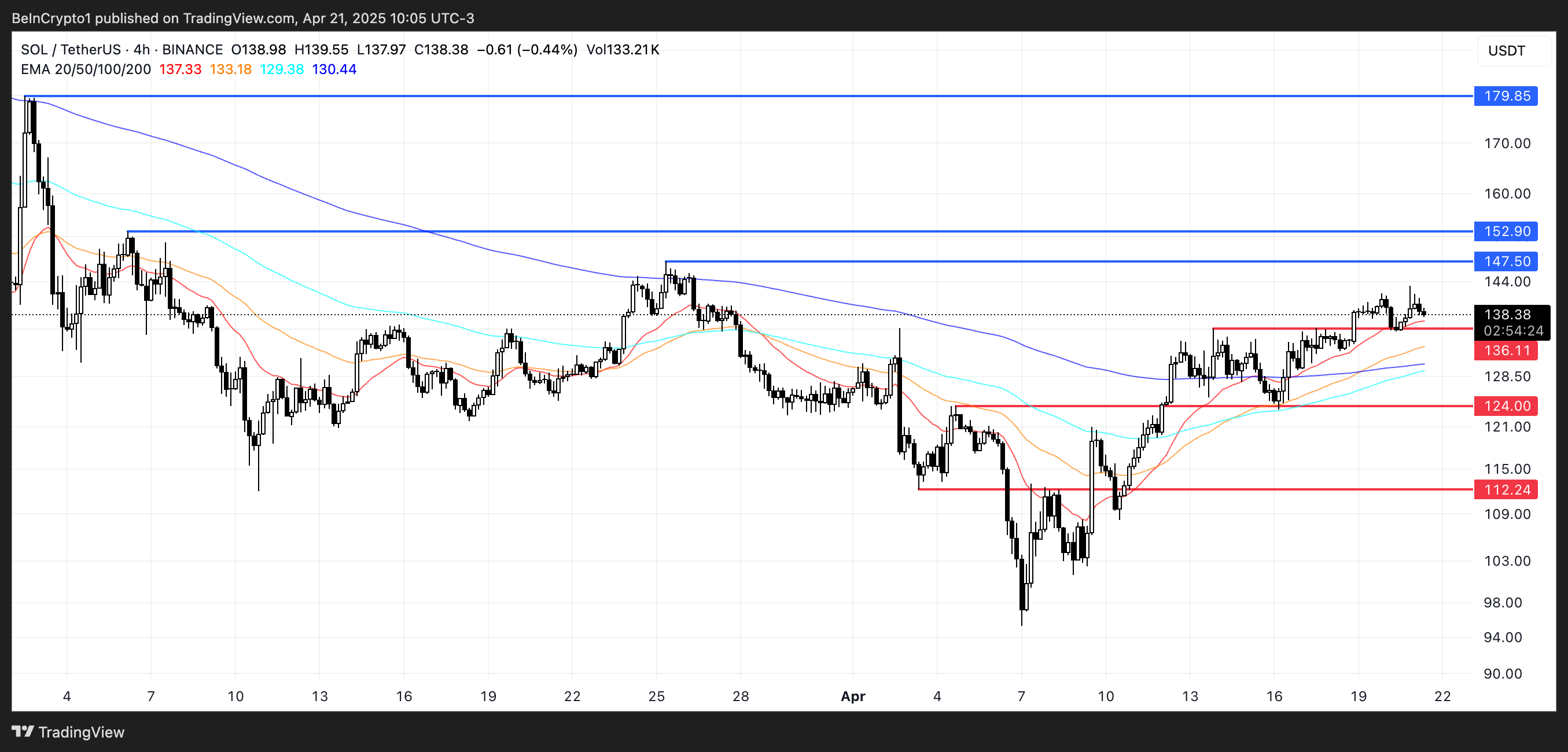
The current structure favors buyers, with higher lows and strong support reinforcing the trend.
However, if momentum fades, a retest of the $136 support is likely.
A breakdown below that level could shift sentiment, exposing Solana to deeper pullbacks toward $124 and even $112.
Disclaimer
In line with the Trust Project guidelines, this price analysis article is for informational purposes only and should not be considered financial or investment advice. BeInCrypto is committed to accurate, unbiased reporting, but market conditions are subject to change without notice. Always conduct your own research and consult with a professional before making any financial decisions. Please note that our Terms and Conditions, Privacy Policy, and Disclaimers have been updated.
Market
Crypto Firms Donated $85 million in Trump’s Inauguration
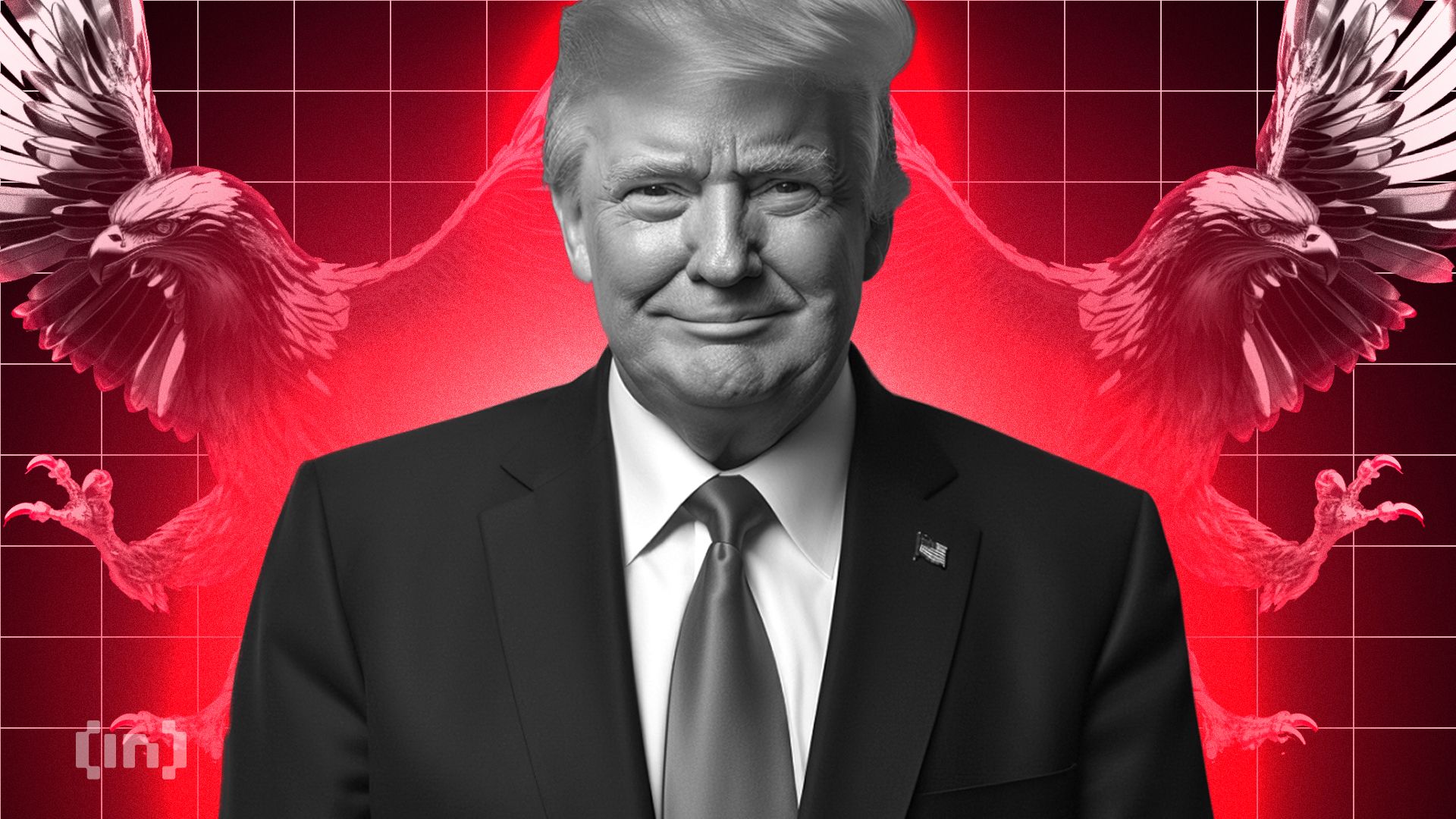
According to a new report, 15 firms and individuals from the crypto industry donated more than $100,000 to President Trump’s Inauguration, totaling over $85 million.
Almost all of these companies apparently received direct or indirect benefits from Trump’s administration. This includes dropped legal proceedings, lucrative business partnerships, participation in Trump’s Crypto Summit, and more.
Crypto Industry Went All-In on Trump’s Inauguration
Since promising to bring friendlier regulations on the campaign trail, Donald Trump attracted a reputation as the Crypto President.
Trump’s Inauguration festivities included a “Crypto Ball,” and several prominent firms made donations for these events. Today, a report has compiled all crypto-related contributions of over $100,000, revealing some interesting facts.

Since taking office, President Trump and his family have been allegedly involved in prominent crypto controversies, and these donations may be linked to several of them.
For example, eight of the donors, Coinbase, Crypto.com, Uniswap, Yuga Labs, Kraken, Ripple, Robinhood, and Consensys, had SEC investigations or lawsuits against them closed since Trump’s term began.
The commission might have dropped its probe against these companies anyway due to its changing stance on crypto enforcement. However, being in the President’s good books likely helped the process.
Further Alleged Benefits for Donors
In other words, nearly half the firms that made donations to Trump’s Inauguration have seen their legal problems cleared up quickly. This isn’t the only regulation-related benefit they allegedly received.
Circle, for example, recently made an IPO after openly stating that Trump’s Presidency made it possible. Galaxy Digital received SEC approval for a major reorganization, a key step for a NASDAQ listing.
Other donors, such as Crypto.com and ONDO, got more direct financial partnerships with businesses associated with the Trump family.
Previously, Ripple’s CEO, Brad Garlinghouse, anticipated a crypto bull market under Trump. Also, XRP, Solana, and Cardano were all unexpectedly included in the US Crypto Reserve announcement.
All three of these companies made major donations to Trump’s Inauguration.
It seems that most of the firms involved got at least some sort of noticeable benefit from these donations. Donors like Multicoin and Paradigm received invitations to Trump’s Crypto Summit, while much more prominent groups like the Ethereum Foundation got snubbed.
Meanwhile, various industry KOLs and community members have already alleged major corruption in Trump’s crypto connections.
While some allegations might lack substantial proof, the crypto space has changed dramatically under the new administration, for both good and bad.
Disclaimer
In adherence to the Trust Project guidelines, BeInCrypto is committed to unbiased, transparent reporting. This news article aims to provide accurate, timely information. However, readers are advised to verify facts independently and consult with a professional before making any decisions based on this content. Please note that our Terms and Conditions, Privacy Policy, and Disclaimers have been updated.
























